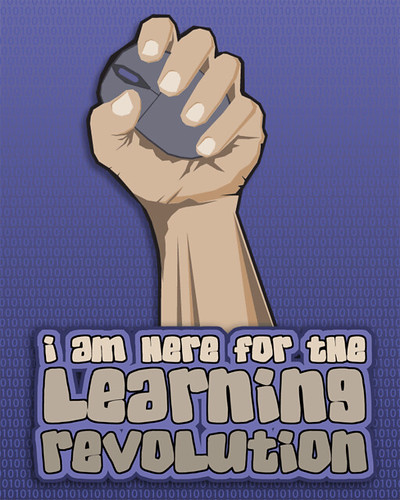Life Long Learning: In Pursuit Of Our Dreams
What d’ya know?
Not enough.
We can never know enough in the modern workplace. At least, that’s how I feel.
Lifetime Learning A Path To Success
Good education serves as the foundation for productive work. Lifetime learning offers a well-marked path to success. It’s up to us to follow it.
On average, Americans spend just 4% of their waking hours in the classroom. That’s not enough time to learn what we’ll need to know for decades in a rapidly changing world. We need to put more effort into learning outside of the classroom, in our everyday life, so we are equipped to seize opportunities in a dynamic world.
We’ve got to realize that intellectual capital depreciates, like physical capital. We’ve got to understand that knowledge that once held economic value can lose favor in the marketplace.
Conference Learning Is Challenging
Let’s face it. Attending conferences is not part of our normal work routine. It happens maybe once a year.
We pull people out of their normal work routines for two to three days. We place them in an unusual environment. We herd them into rooms. We make them sit quietly and still for 60- or 90-minutes. We give them a 15-minute break and then repeat the process.
This is an abnormal process from our daily lives. It feels odd. Unusual. Different.
We provide an experience that is an emotional roller coaster. It is intense. It consumes time, attention, energy.
We provide boring diatribes and lectures. We force constant room churn whether from bad presenters or just several presentations a day.
We don’t encourage attendees to use their mobile devices or laptops. We don’t ask them to get up and move around. We silently say, “Sit down, shut-up, face forward, listen and pay attention.”
We don’t allow any free time.
We don’t give attendees time to think. To process. To consider how to apply relevant information back on the job. We don’t encourage action plans and takeaway strategies.
We compress years of experience and content and try to unpack it all in short time segments with audiences. We cram as much of content as possible into the time allocated.
We strongly urge participants to get up early and stay late. We provide receptions, parties and offer plenty of alcohol. We offer extravagant meals, usually not of the healthy variety.
No wonder people are exhausted by the time they leave the conference. No wonder their brains hurt.
Redesigning Conference Models
We’ve got to design conferences differently.
We’ve got to think about how the brain responds to the constant stream of content. We’ve got to provide options for deep dives, discussions and peer learning. We’ve got to provide adult white space that allows the brain to process new learnings.
The old model of planning a conference focused on what content is to be taught and what schedule is most efficient. We need to adopt a new model that focuses on the attendees’ experience. We need to focus on how the content can be best learned.
We need to move from covering the content to uncovering the learning. From the presenter’s perspective, to the participant’s point of view. From the conference organizer’s model of efficiency to the conference participant’s healthy and holistic experience.
Are you up for the challenge?
What are some things we can do to provide conference experiences that focus on learning? What are some conference experiences you’ve had that were planned with you in mind?



So what are your suggestions then?
I agree with Angie…too many times I see industry groups put on education about new education formats in classroom or theater style. If there really is a different format the leaders should be showcasing innovational learning and making it affordable for content producers. Do you know how MU$H a non-traditional workshop set costs?
‘@Angie
Wow, that’s great question: “What are my suggestions for improving conferences for learning & experience.?” Here are a few ideas:
1. Cut the amount of content being delivered in half. Don’t provide a smorgasboard buffet of topics. Provide breakouts that are all connected in some way by theme or thread. This will lead to retention and learning.
2. Always provide a “Continue the Conversation” or “Discuss Deeper” breakout following a general session. Secure a facilitator to help lead attendees through peer-discussions of the main points and how they can apply them.
3. Provide longer breaks…30 minutes is good that allows people time to check their business email, return calls etc.
4. Keep one night of the conference completely open and free.
5. Provide more informal seating options in pre-convene areas for informal learning and networking.
6. Encourage speakers to follow a 20-20 rule. For every twenty mintues of content covered, allow twenty minutes of audience small group discussion.
7. Ask speakers to end with an action plan or strategies for implementation. Have attendees fill them out after each presenter so that they have ways to implement what was discussed.
8. Start the conference content weeks in advance of the event via webinars, blog posts, radio interviews, etc.
Those are just a few of my suggestions. Thanks for reading and asking too!
@John
How much are non-traditinoal workshop sets? Depends. If you use a place like Chicago’s Catalyst Ranch, the venue lends itself to a variety of non-traditional layouts. It’s part of their package. For traditional hotels and convention centers, you should not have to pay extra to have the room set in Fishbowl, Chevron with pods or Crescent Rounds. If you are going to bring in nontraditional furniture like couches, love seats, ottomans and large exercise balls, then you will have to rent them and pay labor to unload, setup and tear-down.
Thanks for reading and commenting John. I greatly appreciate it.